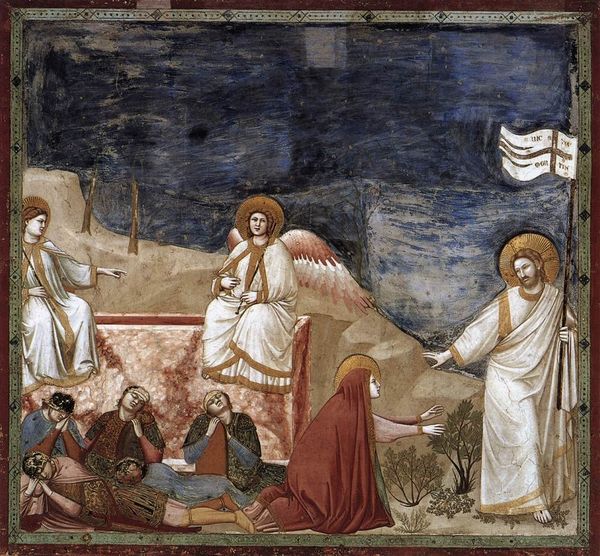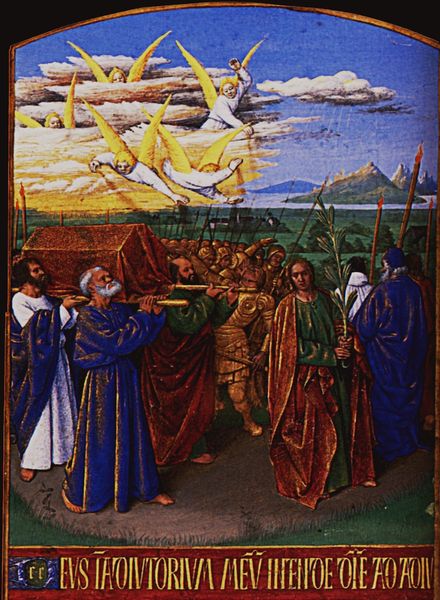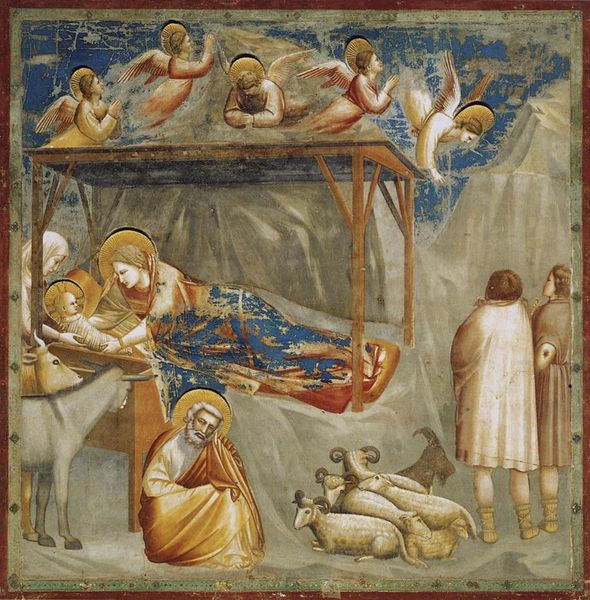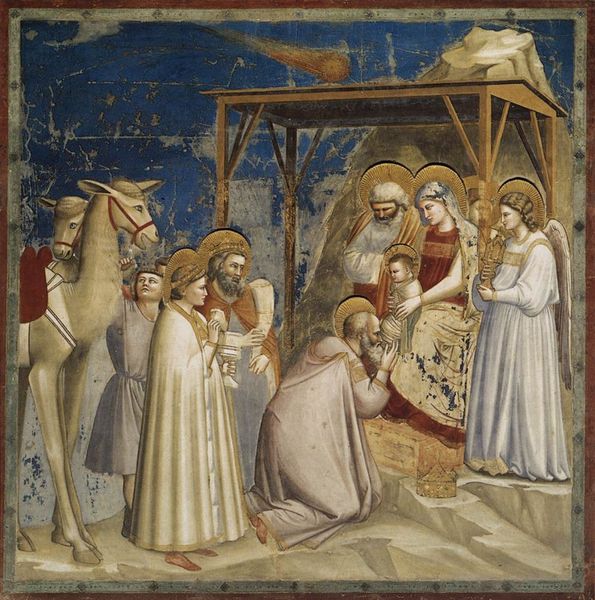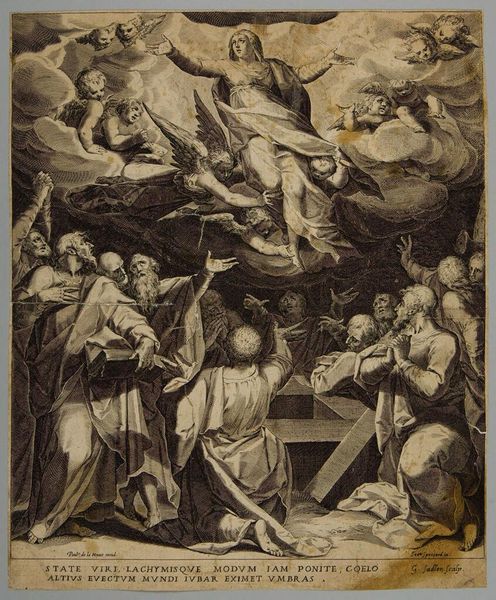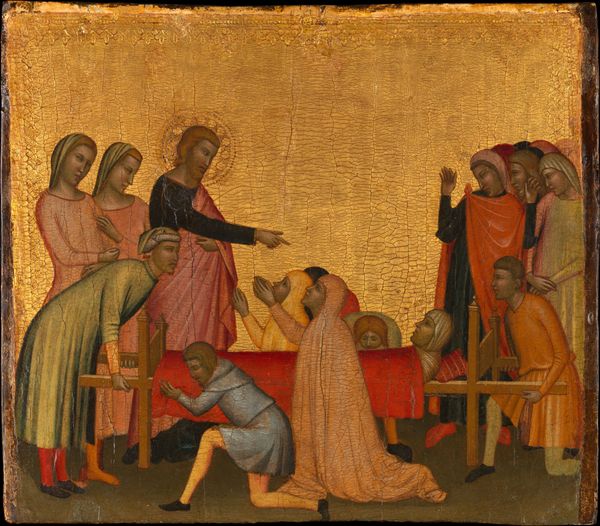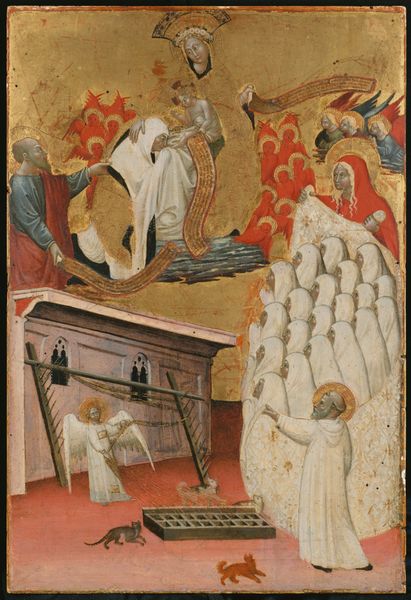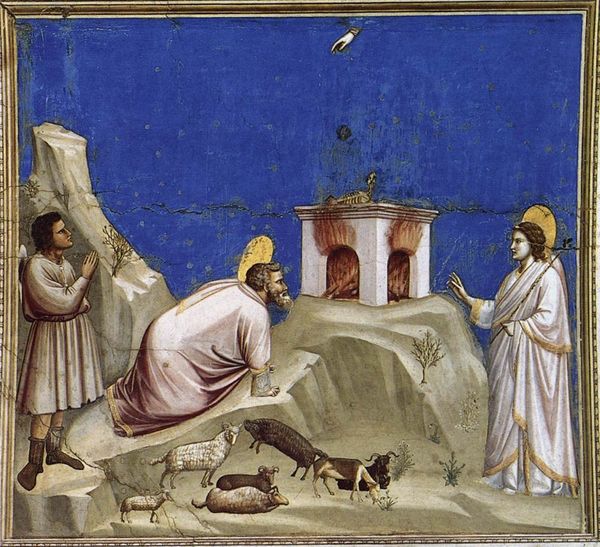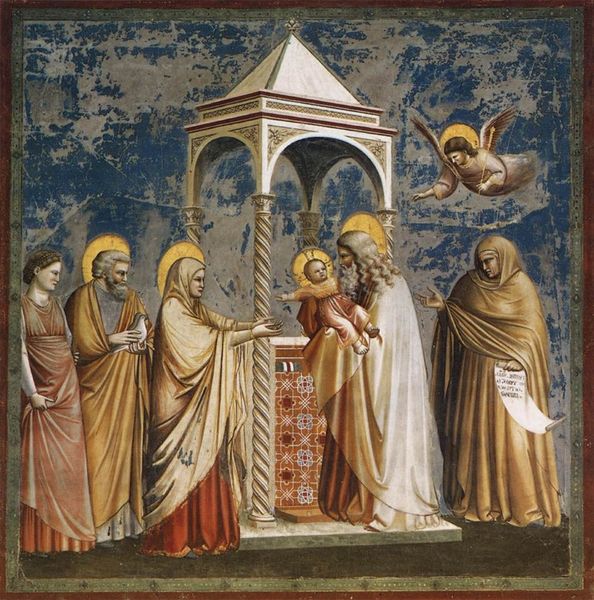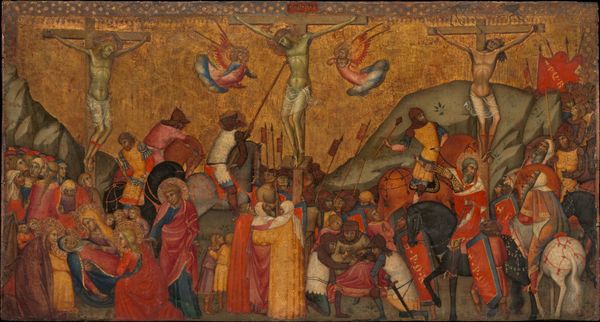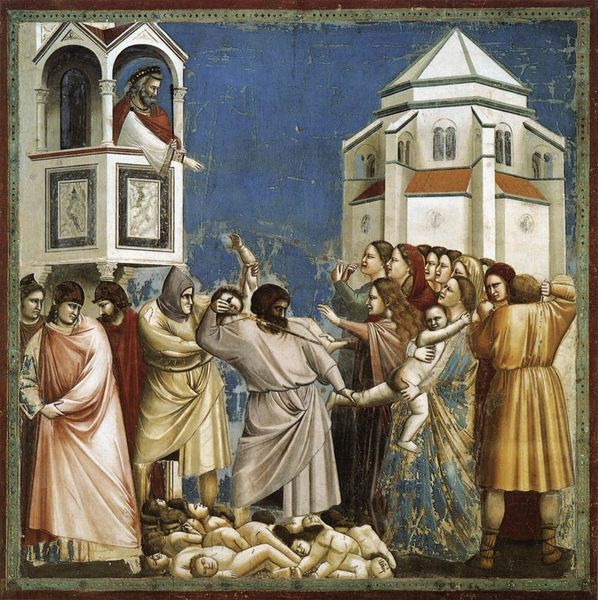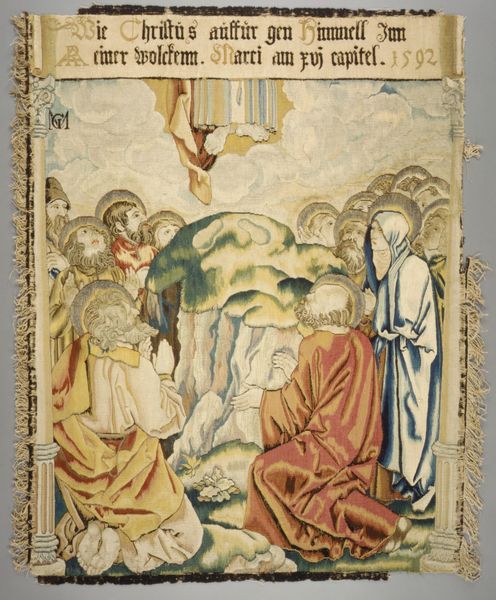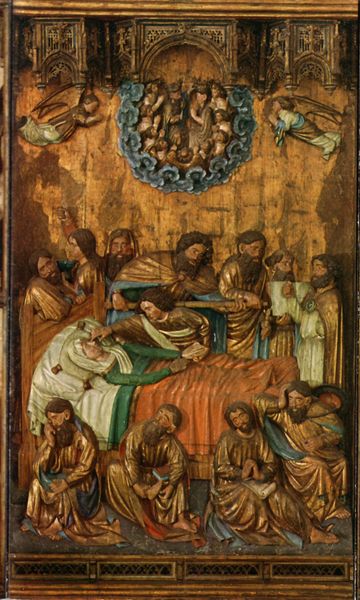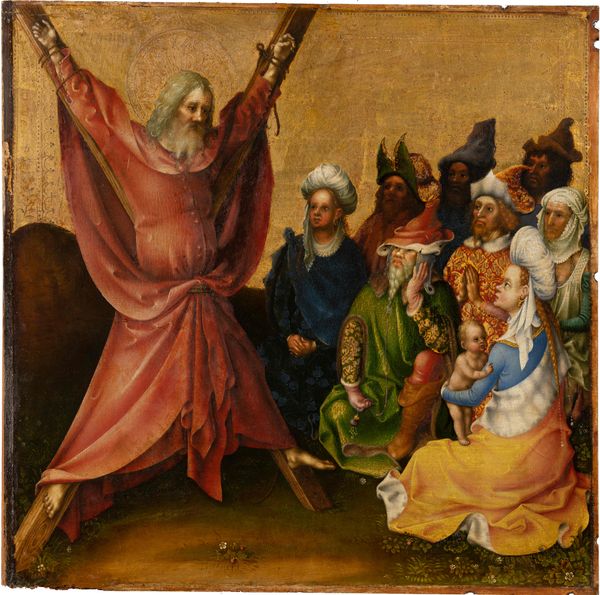
painting, fresco
#
narrative-art
#
painting
#
landscape
#
figuration
#
fresco
#
oil painting
#
jesus-christ
#
egypt
#
christianity
#
history-painting
#
italian-renaissance
#
early-renaissance
#
christ
Dimensions: 200 x 185 cm
Copyright: Public domain
Curator: We're standing before "Flight into Egypt," a fresco created around 1306 by Giotto as part of his work in the Scrovegni Chapel in Padua. It’s an early example of Renaissance painting. What’s your initial take? Editor: It’s remarkably serene. Despite the narrative's inherent drama—escape from persecution—the tone is quite tranquil, almost dreamlike, wouldn't you agree? The figures are solid, but there’s an ethereal quality about them, aided by that faded blue sky. Curator: Absolutely. The chapel was commissioned by Enrico Scrovegni to atone for his father’s usury, so it functions as both a sacred space and a very public act of penance. Giotto's narrative cycle aims to provide a moral framework, using easily accessible emotional language. Editor: Precisely! Think about the symbolism. Egypt is a place of refuge, a space where the Holy Family can evade political and religious persecution, which resonates deeply in contemporary discourse concerning displacement, migration, and human rights. How radical was Giotto depicting them almost as refugees fleeing injustice? Curator: That's an excellent point. It suggests a shift towards a more humanistic interpretation of religious subjects. Instead of focusing solely on divine majesty, he also captured a moment of earthly vulnerability, a sentiment the patrons would be well aware of, given the politics of the day in Italian states. Editor: What also strikes me is how he’s structured the composition—the group moves from left to right, from dark to light. It seems deliberate. Almost like a visual representation of moving from a state of worry into safety? The backdrop, that rather simplified mountain, adds to the feeling. It grounds them. Curator: It's a transitional scene and those mountains were considered as safe haven. Giotto moves away from the stylized Byzantine art of the era, injecting realism and emotion that helped people connect with the story on a human level and find religious meaning in the space. Editor: Definitely. Giotto’s choice of the flight to Egypt story – a family of migrants searching for safety and finding new land to build their lives – seems deeply powerful. It highlights a profound relationship between faith, displacement, and hope for safety that continues to find its place in art history and contemporary art. Curator: It allows a contemporary viewer to interpret this as both devotional artwork and socially conscious message.
Comments
No comments
Be the first to comment and join the conversation on the ultimate creative platform.
